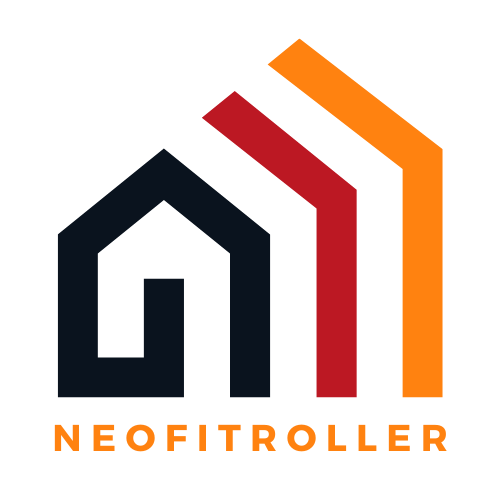Table of Contents
ToggleNavigating the world of rental properties can feel like trying to find a needle in a haystack—especially when it comes to Section 8 landlord applications. With the right approach, however, this process can be smoother than a fresh jar of peanut butter. Landlords who embrace Section 8 not only open their doors to a broader tenant pool but also gain the satisfaction of providing affordable housing to those in need.
Understanding Section 8 Landlord Application
Understanding the Section 8 landlord application necessitates familiarity with the program’s requirements. Landlords must ensure their properties meet safety and livability standards set by the local Housing Authority. This includes passing an inspection that evaluates factors such as sanitation, structural integrity, and overall condition.
Application procedures can vary by state and local jurisdiction. Some landlords find it beneficial to contact their local Housing Authority directly for specific application guidelines. Completing the required forms is a crucial step. Landlords should prepare detailed property information, including size, amenities, and rental rates.
Background checks are typically standard practice. These checks assess tenant eligibility based on income limits and previous rental history. Landlords often review these aspects to align with federal regulations and local policies.
Participating in the Section 8 program offers various advantages. For example, landlords typically receive rent payments guaranteed by the government, reducing the risk of default. Additionally, vacancies may be filled more quickly due to the expanded pool of potential tenants.
Landlords might also enjoy consistent cash flow throughout the year. Payments from the Housing Authority can cover a portion of the rent, ensuring financial stability. Engaging with this program enhances the opportunity for contributing to community welfare through affordable housing.
Ultimately, navigating the Section 8 landlord application process requires attention to detail and a commitment to supporting the community. Each state’s specific requirements should guide landlords as they apply and participate in the program.
Benefits of Accepting Section 8 Tenants

Accepting Section 8 tenants offers numerous advantages for landlords. These benefits enhance rental property stability and financial security.
Financial Advantages
Guaranteed rent payments from the government significantly reduce financial risks. Federal funding assures landlords receive consistent income even during tenant transition periods. Participating in the program also increases the landlord’s tenant pool, leading to competitive rental pricing. Properties that meet Section 8 standards often attract long-term tenants, minimizing turnover costs. Additionally, many jurisdictions offer incentives for landlords who accept Section 8 vouchers, such as reduced property taxes. Overall, the combination of guaranteed payments and increased demand can lead to stronger financial performance.
Stable Income
Section 8 tenants ensure steady cash flow for landlords. With monthly rent subsidies, landlords receive payments directly from the local housing authority. This arrangement allows for budget planning and provides reassurance against potential tenant non-payment issues. When a property houses Section 8 tenants, landlords benefit from reduced vacancy rates, as demand for affordable housing remains high. Long-term leases commonly accompany Section 8 agreements, promoting further rental stability. Such conditions foster a more predictable income stream, ultimately contributing to a secure financial outlook for landlords.
The Application Process for Landlords
Understanding the application process for Section 8 landlords involves several critical steps that ensure compliance and efficiency. Engaging with the local Housing Authority sets the foundation for successful participation.
Initial Requirements
Properties must meet specific criteria to qualify for the Section 8 program. Landlords need to ensure their rental units adhere to safety and livability standards outlined by local regulations. Inspectors typically assess sanitation, structural integrity, and overall condition during evaluations. Meeting these requirements frequently leads to quicker tenant placements. Additionally, landlords confirm they can accept government payments. Properties that meet these standards often attract long-term tenants, enhancing stability.
Documentation Needed
Landlords are required to provide various documents during the application process. Essential paperwork typically includes detailed property information, rental agreements, and proof of ownership. Background checks form another necessary component, assessing tenant eligibility based on income limits and rental history. Some authorities may request additional documentation, such as tax identification numbers or previous rental records. Gathering these documents promptly facilitates a smoother application process. Effective organization of required documents can streamline interaction with the local Housing Authority.
Frequently Asked Questions About Section 8
Landlords often ask what the Section 8 program entails. It’s a federal initiative that assists low-income families by subsidizing their rent. Many seek to understand how to participate in this program. Engaging with the local Housing Authority is essential for gathering necessary information and ensuring compliance with specific guidelines.
Questions often arise regarding property inspections. Each rental must pass local safety and livability standards, ensuring it is suitable for tenants. Landlords should expect an evaluation of sanitation and structural integrity. Preparation can minimize delays during the application process.
Common inquiries include the documentation required for applications. Before applying, landlords need to compile detailed property information, rental agreements, and proof of ownership. Background checks on potential tenants will assess income limits and previous rental history.
Landlords may also ponder the financial advantages. They receive guaranteed rent payments from government agencies, significantly reducing financial risk. This stability allows for better budgeting and planning. Moreover, improved demand for Section 8-approved properties results in less tenant turnover.
Some landlords are curious about potential incentives. Local jurisdictions often offer benefits like lower property taxes for those who accept Section 8 vouchers. This further enhances the financial outlook for participating landlords.
Concerns about tenant eligibility frequently arise. Security and reliability of tenants can dictate application success. Landlords should carefully vet applicants to confirm compliance with income requirements outlined by the Housing Authority.
Common Challenges and Solutions
Landlords often encounter several common challenges when applying for the Section 8 program. One significant hurdle involves ensuring properties meet local safety and livability standards. Addressing this challenge involves conducting thorough inspections and making necessary repairs before submitting applications.
Another frequent issue arises during the documentation process. Completing required forms can prove tedious, especially when landlords must compile various documents like rental agreements and proof of ownership. Organizing these documents ahead of time helps streamline the application process, reducing delays associated with missing paperwork.
Tenant eligibility verification poses yet another challenge for landlords. Assessing income limits and rental history is essential to ensure compliance with Housing Authority requirements. Utilizing a reliable background check service simplifies this process by providing necessary information quickly.
Communication barriers with local Housing Authorities often complicate the process. Engaging proactively with representatives can clarify expectations and improve understanding of specific requirements. Utilizing their resources ensures adherence to the regulations set forth by the program.
Finally, misconceptions around Section 8 can deter some landlords from participating. Many may think that accepting Section 8 vouchers results in a lower income. In reality, guaranteed rent payments from the Housing Authority mitigate financial risk and provide more stable cash flow. Encouraging landlords to consider the financial benefits and local incentives, such as property tax discounts, promotes a more positive perception of the program.
Facilitating a smooth application process for Section 8 involves addressing these common challenges strategically. By incorporating these solutions, landlords can foster a more seamless experience while contributing to affordable housing availability in their communities.
Navigating the Section 8 landlord application process can be a rewarding endeavor. By understanding the program’s requirements and engaging with local Housing Authorities, landlords can open doors to a broader tenant pool. The benefits of guaranteed rent payments and reduced financial risks make participation attractive.
Landlords who take the time to prepare their properties and organize necessary documentation often find the application process smoother. With proactive communication and strategic planning, they can overcome common challenges and contribute positively to the availability of affordable housing in their communities. Embracing the Section 8 program not only enhances financial stability but also fosters a sense of community support.








